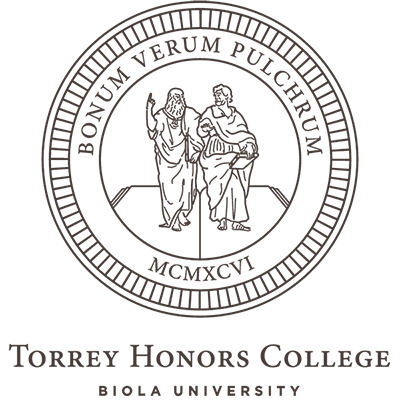A scene from the Leben der heiligen Altväter (1482)
Art, Truth and The Da Vinci Code —Separating Fact From Fiction
The Da Vinci Code‘s action begins in the Louvre in Paris, when one of the book’s central characters performs a riveting re-enactment of Leonardo da Vinci’s famous drawing, “Vitruvian Man.” Most people have seen the sketch before. It’s an anatomical study of a man, sub-divided into geometric proportions and inscribed in a circle and a square. One thing is certain: After seeing this scene, no one will be likely to forget the stark image of Vitruvian Man again.
From Vitruvian Man, the clues lead us to the room in the Louvre where the “Mona Lisa” — perhaps the most famous painting in the world — hangs opposite another of Leonardo’s masterpieces, “Madonna of the Rocks.” Again, these two paintings are described in the book, and will be shown on the big screen in a way that is guaranteed to fix the audience’s attention on them and awaken curiosity. Later, “The Last Supper” (in Milan) takes center stage in a similar way.
As an amateur art historian, I should be thrilled that a major movie is putting Renaissance masterpieces in front of mass audiences. I’ve been studying Leonardo and the art of the Renaissance for years, and I constantly find new layers of meaning and significance in these beautiful, powerful paintings. You’d think I’d be happy that millions of people will be pondering the mysteries of Leonardo da Vinci’s art because of Dan Brown’s use of them in The Da Vinci Code.
Yet I find myself having the opposite reaction. Like most art history buffs I know, I think that The Da Vinci Code, whether as book or as film, will hurt rather than help me introduce people to the art of Leonardo. The reason is simple: Dan Brown treats all of these works of art as containers for secret messages rather than things worth studying for their own sakes. As a result, anybody who comes to Leonardo’s art after The Da Vinci Code is likely to ask all the wrong questions: They will find themselves asking for the secret story behind the paintings, rather than asking about the paintings themselves.
“The story behind the paintings” is an ever-present seduction in the world of art. When you see an amazing painting, something inside of you jumps: You are startled by the truth of the picture, or pierced by its beauty. There you stand, wondering how to account for the experience you’re having. You go to the label mounted on the museum wall, and sometimes you find there a story about the painting. “The artist was in a state of depression,” it says, or “This woman was his mistress” or “This was the view from his window when he was a little boy, and he painted it when he was 80.”
It’s tempting to say, “Ah, that’s why it moved me so deeply when I saw it.” But, of course the story never actually explains your experience. What you saw was the artwork, not the story. The artist is long gone, and his painting is still hanging there on the wall having its effect on passersby, no matter what story is behind it.
Sometimes, the story is a snare that stops you from thinking further about the power of the image and lets you settle instead for a gossipy episode from the biography of the artist.
Probably the worst thing about “the story behind the painting” is that it’s so addictive. We all want explanatory stories so much that we make them up. Art galleries are crowded with urban legends and mythological inventions designed to explain paintings or give them added drama. Here is an example, related to “The Last Supper”:
Once upon a time, a handsome man with a face that looked virtuous posed as a model for one of Leonardo’s paintings of Jesus. From there, he went on to live a life of sin; and decades later, he was chosen by Leonardo as the model for the wicked-looking character Judas in “The Last Supper.” It’s an amazing story of how far down the path of degradation a man can travel in one lifetime. The only problem is: The story is a total fabrication with no basis in fact. Its fabrication is a testimony to the alluring power of Leonardo’s “The Last Supper.” People wouldn’t make up yarns like this about paintings they didn’t care about.
And that brings us back to The Da Vinci Code, which uses the same technique to explain Leonardo’s paintings. But, in this case, Brown doesn’t use lots of different fabricated stories; he relies over and over again on the unproven conspiratorial hypothesis that forms the central idea of the book: Leonardo da Vinci hid secret “symbological” messages in his paintings, to record the fact that Mary Magdalene had Jesus’ baby. Official Christianity, furthermore, is one gigantic cover-up which is designed to keep people from returning to the worship of the goddess, or the union of the divine feminine and the divine masculine, which we would surely do if we knew the unspeakable secret.
Armed with this set of assertions, Brown turns to Leonardo’s mysterious, evocative paintings, and tells the story behind them. Every single time, in one way or another, the secret of Leonardo’s paintings turns out to be the same thing. It’s always about sex, holy sex, the religion of sexuality.
Brown’s handling of “The Mona Lisa” is a good example. Her sly smile is legendary. It hovers there on the face which Leonardo has rendered with the virtuosity that compels us to speak Italian in describing it: sfumato, smoky. Chiaroscuro, light and dark. But in The Da Vinci Code, the painting’s mystery derives from the fact that the person in it, as the book states, seems “neither male nor female. It carries a subtle message of androgyny. It is a fusing of both.”
You have to ask yourself: Is androgyny really such a mysterious thing, that it accounts for the appeal of “The Mona Lisa”? Brown goes one step further, arguing that “not only does the face of Mona Lisa look androgynous, but her name is an anagram of the divine union of male and female.” That is, the letters in “Mona Lisa” can be rearranged to spell “Amon L’isa,” which is supposed to point to gods of virility and fertility, male and female principles.
Unfortunately for Brown, this anagram only works by jumping between languages; and even then, it assumes that Leonardo thought of his painting as having the title “Mona Lisa,” a title nobody used until decades after Leonardo’s death. This is the sort of sloppiness that led one art historian to say, “Just about everything he says about Leonardo is wrong.”
Another example of Brown’s “story behind the painting” approach is his treatment of “The Last Supper.” This mural (which Brown calls a fresco — even though there is a big difference) is full of interesting details, and Brown turns all of them into hints about his conspiracy theory. None of Brown’s Leonardo story works if this claim fails, so it’s worth noting how utterly groundless the claim is.
Every age has its own standards of fashion, taste, and human beauty. In the Italian Renaissance, a handsome young man was usually portrayed in a way that emphasized his rosy cheeks, conspicuous beardlessness and curly hair. Since “the disciple Jesus loved” is always portrayed as a young man, Leonardo paints him according to Renaissance standards. Look at any five paintings of “The Last Supper” from a century on either side of Leonardo, and you will see the same kind of face for John. Either all the artists were in on the conspiracy, or there isn’t one. All The Da Vinci Code proves in this respect is that John looks girly to Dan Brown, but not to Leonardo.
And so it goes throughout the book, with numerous factual errors regarding Leonardo and the art of the Renaissance. As one art historian summarizes, “The author’s grasp of the historical Leonardo is shaky.”
The best that can be said for the novel and its movie adaptation is that they will put art in front of large audiences and provoke some curiosity. The Da Vinci Code will make people start thinking about Leonardo, and will even pose a couple of interesting questions about him and his art. Unfortunately, Dan Brown’s conspiratorial imagination will then take over, and his character Robert Langdon will lecture the audience on the imaginary field of “symbology,” weaving a weird and distracting web of allegations and associations.
This is, of course, exactly the effect The Da Vinci Code will have for people thinking about the history of Christianity. It may cause you to wonder about the origins of the Christian faith and the meaning of the life of Jesus Christ. But to learn anything true about that subject, or any of the other subjects covered in the novel, you will have to close The Da Vinci Code and open another book — the Bible.
(I wrote this article for an apologetics website that was providing as many resources as possible to help answer questions about The DaVinci Code, and wanted my help addressing the art history angle. The site was a project of Focus on the Family, and has long since vanished from the web. The Internet Archive’s Wayback Machine has a 2006 snapshot of it here. Also, I ended up with much more material than I could use for a brief article, so I wrote a separate blog post to catalog the rest of the errors.)
 Fred Sanders
Fred Sanders

